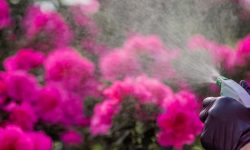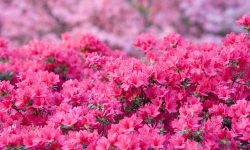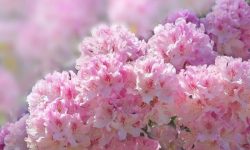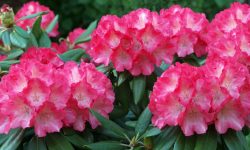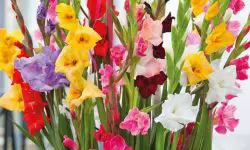Poppies are among the most captivating flowers you can grow. Their delicate petals and vivid hues create a breathtaking display that feels almost magical. Yet, every gardener who falls in love with poppies wonders the same thing—how long do poppies bloom? The answer depends on several factors, from the type of poppy you grow to how you care for it throughout the season. Understanding these details helps you enjoy a longer, more vibrant flowering period that transforms your garden into a sea of color.
The beauty of poppies lies not only in their stunning blossoms but also in their fleeting charm. These blooms often symbolize peace, remembrance, and renewal, making their short lifespan even more meaningful. However, with the right growing conditions and maintenance, you can extend their blooming phase far beyond the average duration. This guide reveals expert techniques, practical insights, and seasonal strategies to help your poppies flourish for as long as possible.
How Long Do Poppies Bloom Naturally?
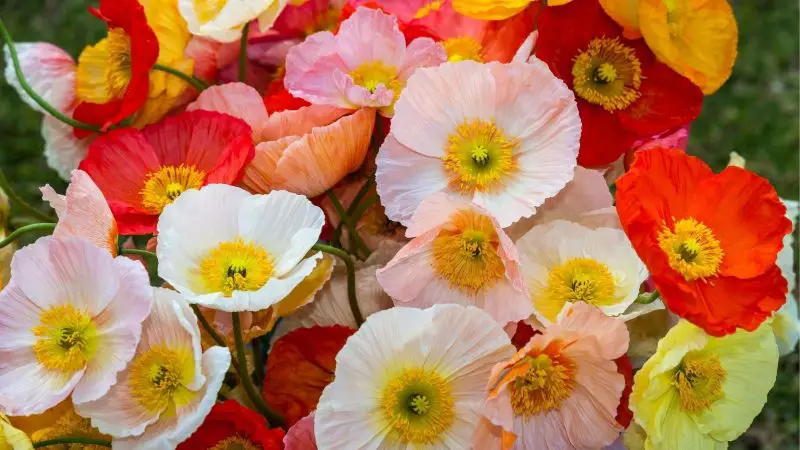
The natural blooming period of poppies varies across species, climates, and growing conditions. Most poppies begin flowering in late spring and continue through early summer, offering a brilliant yet short-lived display. In temperate zones, the bloom period can stretch for four to six weeks, while in warmer regions, poppies may flower for only two to three weeks. Annual poppies such as the Shirley or Corn poppy burst into color quickly but fade faster, whereas perennial types like the Oriental or Iceland poppy bloom for longer stretches when well cared for. Their fragile petals and ephemeral nature make them both delicate and enchanting.
A single poppy bloom usually lasts only three to five days before the petals fall, leaving behind a seed capsule. This natural process is part of the poppy’s reproductive cycle, ensuring future generations thrive. Once the first flush fades, some poppies can rebloom under ideal conditions, especially if gardeners remove spent flowers. This deadheading technique helps redirect energy from seed production back into creating new blossoms. Though brief, the natural rhythm of blooming and fading adds to the flower’s symbolic value—beauty, transience, and renewal.
Environmental conditions play a defining role in how long poppies stay in bloom. Full sunlight, moderate temperatures, and sandy or loamy soil help prolong flowering. Too much rain or humidity can cause petals to wilt prematurely. On the other hand, drought stress can shorten the blooming window by forcing the plant into survival mode. With the right balance of care, gardeners can extend the natural bloom period and enjoy their poppy fields glowing with color for weeks.
Different Types of Poppies and Their Blooming Duration
Poppies come in a wide range of species, each with a unique flowering schedule and lifespan. The Oriental poppy (Papaver orientale) is one of the most beloved varieties, known for its large, silky blooms that appear in late spring. These flowers usually last for four to six weeks and can rebloom later in the season if properly maintained. The Iceland poppy (Papaver nudicaule) thrives in cooler temperatures, producing delicate flowers from early spring until midsummer. With consistent deadheading, this variety can extend its bloom for nearly two months, making it one of the longest-flowering poppies.
Annual poppies, such as the Shirley and Corn poppy, offer a different kind of beauty. They germinate, grow, and flower all within one season, providing an intense burst of color for about three to four weeks. These poppies are easy to cultivate and often self-seed, returning each year without much effort. The California poppy (Eschscholzia californica), the state flower of California, stands out for its golden-orange petals and long blooming period. In mild climates, it can flower continuously from spring through fall, often surviving short dry spells with minimal care.
The Himalayan blue poppy (Meconopsis betonicifolia) is admired for its striking azure blossoms but requires cooler, moist environments to thrive. Its bloom time usually falls between late spring and early summer, lasting about three weeks. While shorter than other varieties, its beauty makes it unforgettable. Each poppy species has evolved to adapt to its native habitat, influencing how long and how often it blooms. Understanding these natural differences helps gardeners choose varieties that best match their regional climate and desired bloom duration.
Factors That Affect How Long Poppies Bloom
Climate and Temperature
Temperature and climate strongly influence how long poppies bloom and how healthy their flowers appear. Ideal growing conditions fall within daytime temperatures of 60°F to 70°F and cool nights around 50°F. These conditions encourage steady bud formation and prevent wilting. In cooler regions, poppies may continue producing flowers for up to six weeks, while in hot, dry areas, the petals often fall within two to three weeks. High temperatures can trigger dormancy, signaling the plant to conserve energy rather than flower. Frost, meanwhile, can damage developing buds, ending the bloom prematurely.
To protect poppies from heat stress, gardeners should use mulch around the base to regulate soil temperature and retain moisture. In regions with harsh sun, offering light afternoon shade can significantly prolong the life of the flowers. Regular watering during heat waves also helps maintain turgidity in the stems, keeping blooms fresh. In contrast, in cold climates, planting poppies in spots with morning sun helps dry dew quickly, reducing fungal risk and extending their bloom cycle.
Soil Quality and Drainage
Healthy soil is the foundation of a long-lasting poppy bloom. These flowers thrive best in loose, well-draining soil rich in organic material. Compacted or clay-heavy soil restricts airflow and traps excess water, which suffocates roots and limits flower production. Ideally, the soil should feel crumbly to the touch and drain well within a few minutes after watering. A balanced mix of sand, loam, and compost allows roots to anchor deeply and access consistent nutrients throughout the flowering phase.
Before planting, amending the soil with perlite or coarse sand improves drainage while compost increases fertility and microbial activity. Poppies prefer a soil pH between 6.5 and 7.5, where essential minerals are most available. Adding a layer of mulch prevents erosion, retains moisture, and stabilizes temperature levels near the roots. By maintaining fertile, airy soil conditions, gardeners ensure poppies produce vibrant, long-lasting blooms that withstand moderate stress from wind and heat.
Watering and Sunlight
Water and sunlight together determine not just how long poppies bloom but also how brilliant their petals appear. Poppies need full sunlight for at least six hours daily to initiate and sustain flowering. Without enough light, stems become weak, and buds may fail to open fully. Consistent watering is equally important. Poppies prefer moist but not soggy soil. Overwatering leads to root rot, while drought stress forces early seed production, shortening the bloom period. Deep watering encourages strong root systems that support continued flowering even during short dry spells.
For the best results, water poppies early in the morning to allow leaves to dry before dusk, reducing fungal issues. Drip irrigation or soaker hoses help deliver moisture directly to the roots, promoting uniform hydration. During very hot weather, adding light mulch around the base conserves moisture and keeps soil temperatures stable. Combining ample sunlight with balanced watering creates the perfect environment for poppies to flourish for many weeks, keeping the garden radiant and full of color.
How to Extend the Blooming Season of Poppies
Extending the blooming season of poppies requires understanding their natural growth rhythm and making a few strategic adjustments. The first and most effective method is deadheading — removing spent flowers before they produce seeds. This simple practice redirects the plant’s energy toward new bud formation instead of seed development. Regular deadheading can extend the blooming season by several weeks and encourages a more uniform display of color. In perennial varieties like the Oriental and Iceland poppy, this often results in a second flush of blooms later in the summer, keeping the garden lively for longer.
Another key to prolonging flowering lies in soil and nutrient management. Poppies are light feeders, but a balanced application of slow-release fertilizer or compost in early spring supports healthy growth and continuous budding. Excessive nitrogen should be avoided, as it promotes leafy growth at the expense of flowers. Ensuring well-drained soil with steady moisture helps the plant focus on producing vibrant blooms. When combined with adequate sunlight and consistent watering, these measures create the ideal foundation for prolonged flowering.
Timing also plays a crucial role in extending bloom duration. Staggered sowing — planting seeds two to three weeks apart — ensures successive waves of blooms throughout the season. In warm regions, sowing in early spring and again in early fall provides extended color across several months. For perennials, cutting back the foliage after the first bloom cycle encourages fresh growth and new buds. By combining pruning, proper feeding, and seasonal timing, gardeners can transform a short-lived poppy display into a long-lasting spectacle.
Best Care Practices for Long-Lasting Poppy Blooms
Proper care throughout the growing season is the foundation of long-lasting poppy blooms. Regular maintenance ensures that plants stay healthy, vigorous, and capable of producing flowers for several weeks. The first step is choosing the right planting site. Poppies need full sunlight, ideally more than six hours daily, to develop strong stems and abundant blossoms. They also require well-drained soil that prevents waterlogging while maintaining enough moisture to support root health. Mulching around the base helps regulate soil temperature and minimize weed competition, giving the plants more energy to focus on flowering.
Feeding poppies properly can make a significant difference in how long they bloom. A light application of balanced fertilizer early in the season encourages steady growth without overstimulating foliage. Poppies are naturally hardy and do not require heavy feeding, but enriching the soil with organic compost boosts nutrient levels and improves texture. Avoid using high-nitrogen fertilizers, as they can cause excessive leaf production and shorten the bloom period. Consistent watering is equally important. Deep watering once a week allows roots to grow deeper, making the plant more resilient during dry spells.
Pruning and disease control are also essential parts of poppy care. Removing faded flowers, damaged stems, and diseased leaves keeps the plant clean and encourages new blooms. Watch for common fungal problems like powdery mildew or root rot, especially in humid weather. Proper air circulation and morning watering can help prevent these issues. By combining site selection, nutrient management, and attentive maintenance, gardeners can maximize the lifespan and visual appeal of their poppy flowers year after year.
Common Mistakes That Shorten Poppy Blooming Time
Overwatering and Poor Drainage
One of the most common mistakes that shortens poppy blooming time is overwatering. Poppies are naturally adapted to semi-dry conditions, so excessive watering can drown their roots and suffocate the soil. When the root zone remains waterlogged, oxygen levels drop, and fungal diseases like root rot quickly develop. This weakens the plant’s ability to form new buds and often leads to premature wilting of existing blooms. Many gardeners misinterpret drooping leaves as a sign of dryness and continue watering, unknowingly worsening the problem. In poorly drained soil, water stagnation can end a blooming season in just a few days.
To prevent this, always allow the top inch of soil to dry before watering again. Deep, infrequent watering trains the roots to grow downward, improving drought tolerance and bloom longevity. If your garden soil is clay-heavy, mix in sand, compost, or perlite before planting to increase aeration. Raised beds or sloped planting areas also help improve drainage. Healthy, well-aerated roots result in stronger stems and flowers that stay open longer, allowing your poppies to display their beauty for several weeks.
Using Excessive Fertilizer
Overfertilization is another common reason poppies bloom for a shorter time than expected. These plants do not require rich soil or heavy feeding to thrive. When too much nitrogen is added, the plant channels energy into producing soft, lush leaves instead of flowers. The result is fewer blooms, weaker stems, and a shorter display period. Over time, excessive fertilizer can also build up salts in the soil, harming root function and reducing nutrient absorption. Chemical fertilizers used too often can even burn the roots, permanently stunting growth.
To encourage longer blooming, use a balanced, slow-release fertilizer such as 5-10-10 or 10-10-10 once at the start of spring. Organic alternatives like compost tea, bone meal, or worm castings feed the plant gradually without overwhelming it. If the leaves look overly green but no buds appear, stop fertilizing immediately and allow the soil to balance naturally. Poppies flourish best in nutrient-stable environments, where moderate feeding promotes continuous flowering and sturdy stems that support long-lasting blooms.
Neglecting Deadheading and Maintenance
Neglecting regular deadheading and plant maintenance is a silent bloom killer for poppies. Once a poppy finishes flowering, it naturally shifts its energy toward forming seed pods. Without removing these spent flowers, the plant believes its reproductive job is complete and stops producing new buds. This shortens the blooming cycle significantly and reduces overall plant vitality. Over time, neglected poppies can become leggy and less productive, producing fewer blossoms with each season. Even perennial types like Oriental or Iceland poppies lose their reblooming potential if maintenance is ignored.
To prevent early decline, gardeners should deadhead spent blooms as soon as petals fall. This redirection of energy stimulates the plant to generate new buds rather than seeds. Pruning faded foliage after the first flush also rejuvenates the plant for another bloom phase later in the season. For perennials, cutting back stems to just above the basal leaves often results in a vibrant late-summer rebloom. Regular care keeps the plant vigorous, extends the bloom window, and maintains a visually stunning poppy display throughout the growing season.
Seasonal Care for Poppies: Spring to Fall Guide
Spring Care
Spring marks the awakening of poppies after their winter dormancy, making it the most crucial time for preparation and early care. As temperatures rise, check the soil’s moisture and loosen compacted areas to promote airflow around the roots. Remove old mulch and debris left over from winter to prevent fungal growth. Applying a light layer of compost or well-rotted manure helps replenish nutrients and stimulate new shoots. If poppies were sown in the fall, thin out overcrowded seedlings to give each plant enough space to develop strong stems and healthy buds.
Spring is also the best time to control weeds before they compete for water and nutrients. Ensure the plants receive full sunlight and moderate watering as new growth begins. Mulching with organic material like straw helps maintain soil temperature and prevent drying. Avoid overwatering during early growth, as young poppies are especially sensitive to root rot. By mid-spring, your poppies should be forming buds, preparing for their first flush of dazzling blooms that define the beauty of late spring gardens.
Summer Care
Summer brings warmth and intense light, making moisture management a top priority. Poppies prefer full sun but can suffer under extreme heat, which shortens bloom duration. To maintain longer flowering, water deeply once or twice a week to hydrate roots without flooding. Early morning watering reduces evaporation and keeps foliage dry. Applying organic mulch—such as straw, pine needles, or compost—shields roots from excessive heat and helps conserve moisture. Regular deadheading throughout summer prevents seed formation and redirects energy toward new bud growth.
During prolonged heat waves, poppies benefit from partial afternoon shade to reduce stress on petals. Avoid heavy fertilization, as too much nitrogen during summer encourages leaf growth instead of flowers. Instead, feed lightly with compost tea or a diluted seaweed solution once a month. Remove any faded foliage and monitor for pests like aphids, which thrive in warm conditions. With consistent care and temperature management, summer poppies continue to bloom beautifully even during hot spells, adding vibrant life to your garden through the season’s peak.
Fall Care
Fall signals a shift from active blooming to replenishment and preparation for next year. Perennial poppies begin channeling energy into root development, while annuals complete their life cycle. As blooms fade, cut back old flower stems and remove dead leaves to improve airflow and reduce disease risk. Mulching the soil with compost, leaf mold, or straw helps insulate roots and restore organic matter. For annual poppies, allow a few seed pods to mature and drop naturally—this encourages self-seeding, ensuring fresh flowers the following spring.
For gardeners in cool climates, early fall is also a great time to sow new poppy seeds. The mild temperatures and soft soil provide perfect conditions for germination. Keep the soil slightly moist until seedlings emerge, then reduce watering as they establish. Avoid fertilizing during this stage, as poppies prefer lean soil in fall. As the weather cools, applying a thin protective mulch layer prevents frost damage and supports root health. Proper fall preparation ensures a robust return of healthy, abundant blooms next year.
Winter Care
Winter is a time of rest for poppies, but it’s still important to provide protection. Most perennial varieties enter dormancy, while annuals reseed themselves and prepare for spring growth. In cold regions, poppies need insulation to survive freezing conditions. Apply a thick layer of straw, pine needles, or shredded leaves around the base to protect roots from frost. Avoid watering frequently, as the combination of cold and moisture can lead to root rot. The soil should remain barely damp but never soggy throughout winter.
If your poppies are grown in pots, move them to a sheltered area away from harsh winds or heavy rain. Avoid pruning too early—wait until late winter or early spring to cut back dead stems. During mild winters, poppies may retain some green foliage, which helps sustain energy for early growth. Periodically check for mold or pests around the mulch line and remove any buildup. With proper winter protection and care, your poppies will emerge stronger and bloom earlier when spring warmth returns.
How to Encourage Poppies to Rebloom
Encouraging poppies to rebloom requires a careful balance of pruning, watering, and nutrient management. Once the first flush of blooms fades, remove all spent flowers immediately. This process, known as deadheading, stops the plant from producing seeds and redirects its energy toward forming new buds. For perennial species like Oriental and Iceland poppies, cutting back the flower stems to just above the basal foliage stimulates fresh growth. After pruning, apply a thin layer of compost or balanced fertilizer to replenish nutrients lost during the initial bloom. With steady care, many poppies will reward you with a second, smaller flush of blossoms in late summer or early fall.
Consistent watering also plays a major role in encouraging reblooming. Poppies should never experience prolonged drought stress after their first flowering cycle. When the soil dries too deeply, the plant shifts into dormancy and stops producing buds. Instead, water deeply once a week to maintain steady soil moisture, especially during hot spells. Providing light afternoon shade during peak summer heat prevents the delicate buds from drying out before they open. Maintaining this rhythm of pruning, watering, and shading helps extend the plant’s vitality and keeps it in a semi-active growth state.
Fertilization timing can make the difference between a single bloom cycle and multiple waves of flowers. A light application of low-nitrogen fertilizer after the first bloom strengthens roots without overstimulating leaf growth. Organic options such as bone meal, compost tea, or worm castings deliver gentle nutrients that support continuous flowering. Avoid high nitrogen mixes, which cause lush leaves but few blooms. By maintaining moderate soil fertility and proper after-bloom care, gardeners can often double their poppy’s display season and enjoy vivid colors long after the first blossoms fade.
Do Poppies Bloom More Than Once a Year?
Whether poppies bloom more than once a year depends largely on their species and growing conditions. Annual poppies, such as the Shirley or Corn poppy, complete their life cycle within a single growing season. They sprout, bloom, and produce seeds all within a few months. Once the flowers fade and seed pods mature, the plant naturally dies back. These types will not rebloom, but they often reseed themselves freely, creating the illusion of a recurring bloom the following year. In contrast, perennial poppies like the Oriental or Iceland varieties have the potential to produce multiple bloom flushes when cared for properly.
Perennial poppies typically flower in late spring to early summer, then enter a brief dormancy during midseason heat. With strategic deadheading and cutting back after the first bloom cycle, they can regenerate new shoots and flower again in late summer or early fall. The second bloom is often lighter but still impressive. Iceland poppies, in particular, are known for their extended bloom periods, lasting up to two months in cool climates. The key to multiple flowering cycles is maintaining consistent soil moisture, moderate feeding, and regular pruning throughout the season.
However, even the most vigorous poppies need rest periods to recover between blooming phases. Attempting to force constant reblooming with excessive fertilizer or water can exhaust the plant. Instead, focus on creating ideal environmental balance—plenty of sunlight, airy soil, and periodic care. By understanding each poppy type’s natural rhythm, gardeners can plan bloom cycles strategically and enjoy waves of color that return several times a year under the right conditions.
How Long Do Poppy Blooms Last Once Open?
Once a poppy bloom opens, its lifespan is surprisingly brief yet profoundly beautiful. Most poppy flowers last between three and seven days, depending on the species and weather conditions. The delicate petals, almost paper-thin, are highly sensitive to heat, wind, and rain. In cool, mild climates, poppies may remain open for nearly a week, displaying vivid color and texture. In contrast, hot or dry conditions can cause petals to fade or fall within just two or three days. This fleeting beauty is part of the flower’s charm, representing the transient nature of life and renewal. Each bloom’s short existence encourages gardeners to appreciate every moment of color while it lasts.
Environmental conditions play a key role in determining how long each flower stays open. Poppies thrive best in stable temperatures and moderate sunlight. Strong winds or heavy rain can tear the petals quickly, cutting the bloom time short. Morning watering helps maintain freshness through the day by giving the plant adequate hydration before heat stress begins. Providing shelter from harsh midday sun can also extend petal life by preventing dehydration. When combined with good soil health and regular deadheading, poppies can continuously replace fading blooms with fresh ones throughout their peak season.
The life span of each bloom may be short, but the plant’s ability to produce successive flowers ensures long-lasting garden color. Many poppy varieties form multiple buds per stem, opening sequentially over several weeks. By maintaining consistent care and removing wilted blossoms promptly, gardeners can enjoy a rotating cycle of blooms that keeps their poppy beds lively for more than a month. Understanding this natural rhythm helps maximize both visual impact and seasonal longevity.
Best Companion Plants to Prolong Poppy Bloom Display
Pairing poppies with the right companion plants not only enhances garden aesthetics but also helps extend the blooming display. Ideal companions provide contrasting textures, complementary colors, and overlapping flowering times. Plants such as lavender, salvia, and catmint (Nepeta) pair beautifully with poppies because they share similar growing needs—full sun, well-drained soil, and moderate watering. Their longer bloom periods continue to add color once the poppies fade, creating a seamless seasonal transition. Additionally, their fragrant foliage helps deter pests, keeping the poppies healthier for a longer time.
Perennials like coreopsis, gaillardia, and yarrow make excellent partners for both annual and perennial poppies. These drought-tolerant plants thrive in similar soil conditions and bloom over extended periods, ensuring the garden never looks bare. Yarrow, in particular, supports pollinators and attracts beneficial insects that protect poppies from aphids and other common pests. Blue or purple flowering plants, such as Russian sage and larkspur, complement the bright reds and oranges of poppies, forming a visually balanced and pollinator-friendly landscape that blooms from early spring through midsummer.
For cooler climates, combining poppies with hardy companions like alliums, irises, or ornamental grasses provides structure and extended color. Alliums bloom slightly later than poppies, filling the gap after petals drop, while ornamental grasses add year-round texture and movement. These companions not only enrich the visual interest of a poppy garden but also create environmental stability—reducing soil erosion and improving drainage. By mixing early-, mid-, and late-blooming species, gardeners can maintain continuous bursts of color and enjoy a thriving, harmonious garden throughout the growing season.
FAQs about How Long Poppies Bloom
How long do poppies usually stay in bloom?
Most poppy flowers stay in bloom for about three to seven days once they open. However, the entire blooming period of the plant can last four to six weeks, depending on the variety and growing conditions. Perennial poppies like Oriental and Iceland poppies often rebloom later in the season with proper care, while annual types complete their cycle within a few weeks.
Do poppies bloom more than once a year?
Yes, some perennial poppies can bloom more than once a year. After their first bloom fades, cutting back the stems and keeping the soil moist can trigger a secondary flowering in late summer or early fall. Annual poppies do not rebloom, but they often reseed themselves, creating new plants that flower the following year.
How can I make my poppies bloom longer?
To make poppies bloom longer, ensure they grow in full sun and well-draining soil. Deadhead spent flowers regularly to prevent seed formation, which encourages the plant to produce new buds. Deep watering once a week, combined with a layer of mulch, keeps roots cool and hydrated. Avoid overfertilizing, as excess nitrogen shortens bloom time by promoting leafy growth instead of flowers.
What is the best time of year for poppies to bloom?
Poppies typically bloom in late spring and early summer, though timing varies by region and species. In cooler climates, poppies may start flowering in early spring and continue into midsummer. In warmer areas, they often bloom earlier but for a shorter duration. With proper pruning and watering, you can extend the bloom well into the later months of summer.
Why do my poppies stop blooming early?
Poppies often stop blooming early due to excessive heat, overwatering, or lack of sunlight. If seed pods form too soon, the plant redirects energy away from flowering. Removing spent blooms, maintaining consistent moisture, and protecting the plants from harsh afternoon sun can help extend their blooming phase. Healthy soil and balanced nutrients also play a key role in sustaining longer bloom cycles.
Conclusion
Poppies may bloom for only a short time, but their beauty leaves a lasting impression. With the right care—ample sunlight, balanced watering, and timely deadheading—you can extend their vibrant display far beyond the average season. Whether grown as annuals or perennials, poppies reward patience and attention with breathtaking waves of color. Understanding their natural rhythm helps you create a garden that flourishes year after year. A field of poppies in full bloom is not just a sight to see—it’s a celebration of life, renewal, and fleeting perfection.

